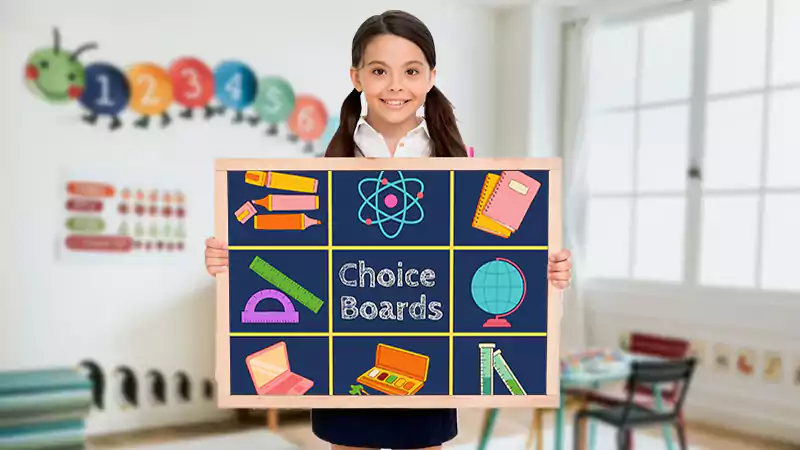
The reformations in the teaching dimension are based on one principle – understanding student needs. The better you understand your students, the better you can teach them. And what better way is there to understand them than to ask their opinions? That’s what a choice board does.
Just as the name suggests, a choice board offers choice. Students are provided with an array of activities, and they get to select the sequence and pace to perform them. The activities have one ultimate goal, divided into smaller and fun segments. This kinesthetic learning style is highly beneficial and is being adopted by many educational institutions.
Read on to find out how choice boards increase student performance and interest. And just like a choice board for studentsthe following table of content also gives you the choice of jumping to a selected section.
Known by many names, like think-tac-toe, playlists, menu boards, pathways, or learning menus, a choice board is said to give that magical boost to your classroom. It incorporates explicit instructions to directly communicate objectives to the students. But what exactly does it do? Let’s find out.
What is a Choice Board?
Choice board for students is a visual or graphic organizing tool that has tasks written on them. The basic theme is to break down a huge concept into small goals. By achieving each of them separately, the student learns all aspects of the concept.
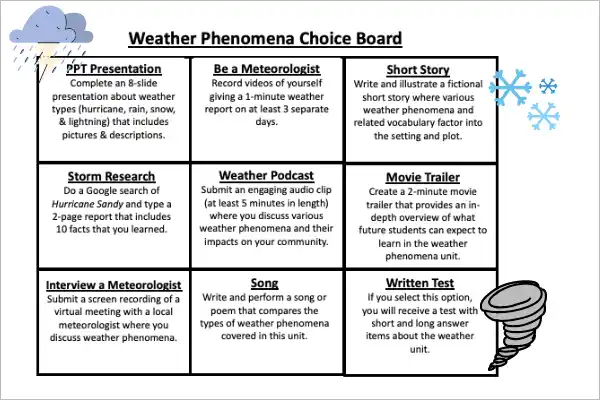
Choice boards are also called think-tac-toe because the tic-tac-toe format is the go-to choice for it. One large square is divided into 9 equal and smaller squares with a task written inside each of them. And every time you complete a task, you can put a mark on the designated square. Just like in the game, you can choose a straight or diagonal path to the mark.

It is a simple strategic design that takes students’ needs and understanding levels into consideration. The tasks are designed in a fun way, as the representation helps in keeping students engaged. The activities are meant to cater to all learning styles by following the principles of universal design for learning.
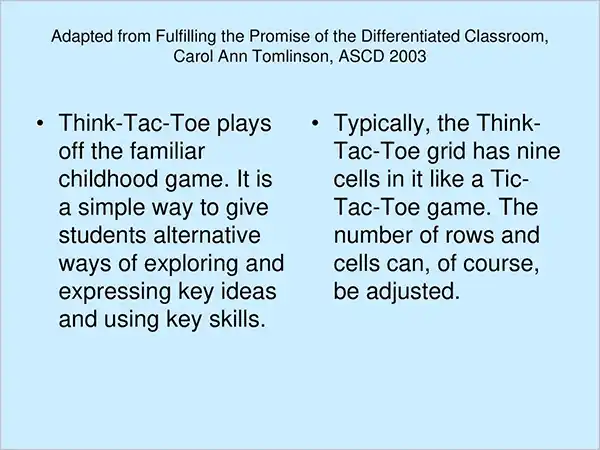
Choice boards are for everyone. There are choice boards for middle school students and college goers, and kindergartners absolutely love this concept. These can also be used in offices and for household chores as well. The upcoming section will throw light on how choice boards suit every dimension.
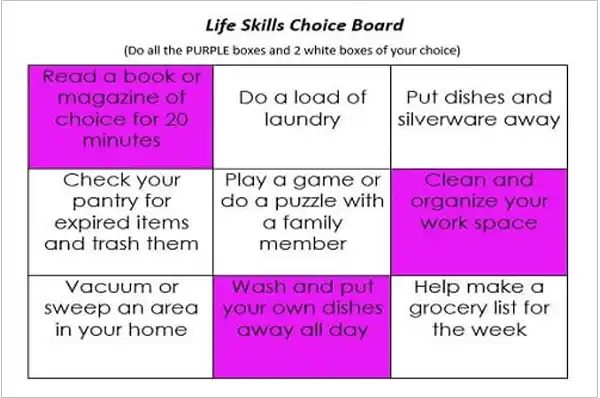
Is the Choice Board Beneficial for Everyone?
One aspect that makes the choice board a suitable option for everyone is its adaptability. It supports differentiated learning because now the teaching world understands that not all students learn the same way. Hence, the one-size-fits-all approach has to go.
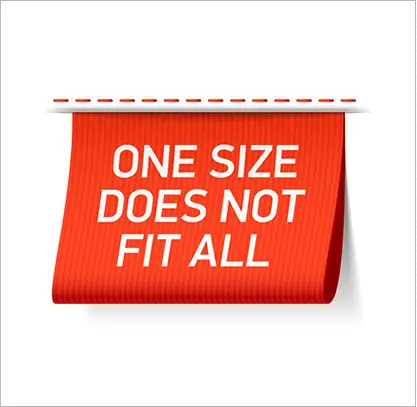
When designing the first-ever choice board for their classroom, the educator surely will have a universal and concept-oriented viewpoint. However, this first step is a means to determine the potential and preferences of the students. Once the board is introduced in class, the teacher can monitor what every student’s pick is.
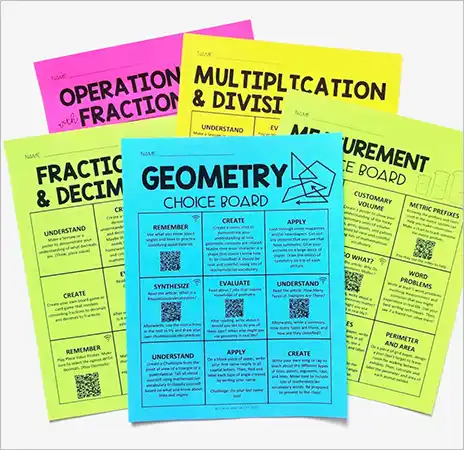
The free will to choose tasks reveals the students’ learning style. Some might be the bookworms of the group and choose a reading choice board. Others might go for activities related to hands-on learning methods. Yet others will have a preference for writing choice boards. The best way is to have at least one activity of each genre. Also, try to include the 4Cs of learning in your student choice board template: communication, collaboration, critical thinking, and creativity.

The understanding level of the pupils is also a deciding factor. There can be a generic board for all. Additionally, there can be an easier alternative for struggling students and an extra challenging one for the brainy lot. This does not mean some work harder than others; it simply means personalized tasks.
Now that we can see these boards are for everyone, let us understand the merits of using them.
How are Choice Boards Helpful?
When students are given a choice, it makes learning fun for them. A one-size-fits-all approach does not cater to all learning styles. Therefore, choice boards are formulated with diverse activities so that there’s something for everyone.
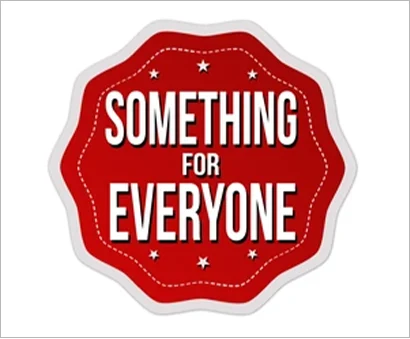
There are many reasons that make educators lean towards having a choice board:
- Choice boards prompt students to do better. As they can select tasks as per their learning style, they become more interested in the learning process. This also makes them responsible.
- As choice boards incorporate almost all learning styles, students can explore learning styles apart from their own as well. This also allows combining two or more learning styles to enhance edification.

- The biggest advantage for teachers using choice boards is how they can distinguish student abilities. Based on the choices of the students, teachers can decipher the learning style, pace, and interests of the students. This helps them understand their pupils and design curricula based on that.

- Student choice boards also teach them that learning should be oriented toward knowledge, and developing skills. Learning should not be considered just a task-based process.

The perks are enough to persuade the usage of choice boards. So, let us learn how to draft one.
How to Design Choice Boards for Students?
Choice Boards are a really cool addition to the learning process for students. They are cleverly designed organizers that make learning engaging with their visual appeal. That’s why they are becoming extremely popular.
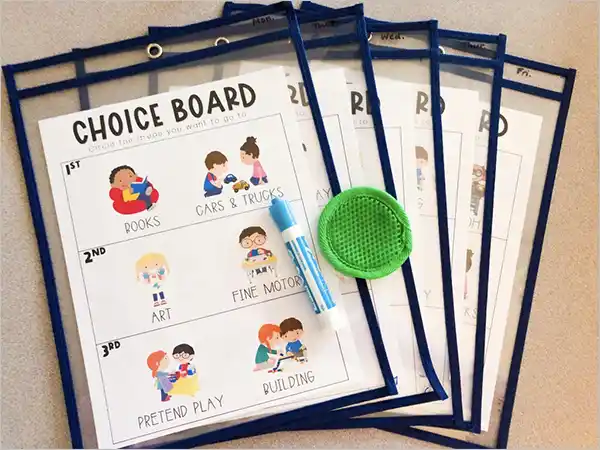
Educators who want to incorporate choice boards in their classrooms can follow certain tips to utilize their potential to the fullest.
Here are the points that are to be considered for devising the perfect choice board:
- Single Concept: The goal of introducing choice boards is to understand the concepts thoroughly. Therefore, every board should target only one lesson at a time. All tasks should be related to various aspects of one topic only. All theories of one concept have to be completed first before moving on to the next one.

- Acknowledging all learning needs: Students vary in their learning needs and pace. While deciding on the tasks, cognitive differences should be a determiner. Activities should be planned in a way that engages all the senses. Abiding by the multiple intelligence theory offers something to each learning style.

- Arrangement: Choice boards are mostly arranged in the tic-tac-toe format, where one large square is divided into 9 smaller task grids. Students can complete tasks just like they play the game, in a line or diagonally. Other formats are also available with more or less grids. You can create your own or download any student choice board template from Google.


Educators can put a final fun activity or a compulsory task in the middle square of their choice board. It can also be a “free space” for students to share insights.
Choice boards can be made for a singular chapter, a subject, or an entire grade. Not only that, these boards can teach various practical concepts as well, like text features. Moreover, depending on the ease of the students, it can be presented in a virtual or written format.
A choice board can have a variety of goals to choose from:
- Proficiency-oriented boards.
- Academic boards.
- Concept-specific boards.
- Revision boards.
- Assignment-based board.
- Performance tracking boards.
- Independent tasks: The activities should be freestanding. If the tasks are codependent, it won’t be possible to choose them at random. The whole idea of choice boards is to provide students the freedom to choose what and how they want to learn. Therefore, the activities must be discrete.

- Indicate complexity: It is also necessary to guide students on how to use the choice board. One way to specify the difficulty level is to denote the tasks with different colors or a couple of starts. Each level can be associated with a color. Or the higher the number of stars, the more difficult the task.
This helps students in selecting the tasks properly and not get confused or overwhelmed by accidentally beginning with a tough task.

Let’s say students are given a spelling choice board. In this, the easier words can be written with a green pen, the moderate ones with a yellow one, and the tougher ones using a red pen.
- Include rewards and points: Creating a rewarding learning environment encourages students to do better. Give points on completion of each task and a small gift to the highest scorer. Along with this, always boost morale with positive feedback. This will inspire students to do better and strive for success.

- Customization and upgrade: Choice boards are customizable tools. A choice board can be adapted to equip the special needs of one student or can be advanced to challenge the gifted ones.
The implementation of a choice board can be best understood through an example. So, let us have a practical insight into this visual organization tool.
Example of a Choice Board
Creating choice boards for students requires an idea about your students’ abilities. You can also ask certain questions like what activities the students like, or how much time will it take for them to finish a task. Using this information will help you design the perfect choice board for your classroom.
Let us take the example of designing a choice board to teach a play:
- Let us take the conventional tic-tac-toe format.
- Divide a large square into 9 tiny and equal grids.
- Now start writing activities related to the play.
- Let the first task be “Describe the main characters in 1-2 sentences”.
- The second task could be “Describe the era the play is set in”.
- Then ask the students to “Deliver a speech as your favorite character”. You can also ask them to dress up as the character.
- One of the activities could be to “Write a song about an event of the play”.
- You can also ask the students to “Write their thoughts about the opening and the ending of the play”.
- They can also be asked to “Suggest an alternate ending”.
- Ask them to “Draw a portrait of their favorite character”.
- They can also “Perform a selected portion of the play”.
- The central grid can have a fun and compulsory task, like “Make a flowchart about the events of the play”.
These activities connect the students to the play and explore different aspects of it. The students will have fun completing these tasks and, in turn, will memorize the play by heart.
Final Thoughts
Even though creating choice boards for students is a time-consuming affair, it is undeniable that this tool is a motivating and meaningful option. While the students gain their knowledge using a choice boardthe teachers engage in monitoring their performance. Educators should directly discuss progress and preferences with students. When students vocalize their areas of interest and difficulty, it helps their mentors to assist them in their learning journey.
 Tips Clear – Media Surfer News Tips Clear: Your Daily Dose of Expert Advice
Tips Clear – Media Surfer News Tips Clear: Your Daily Dose of Expert Advice